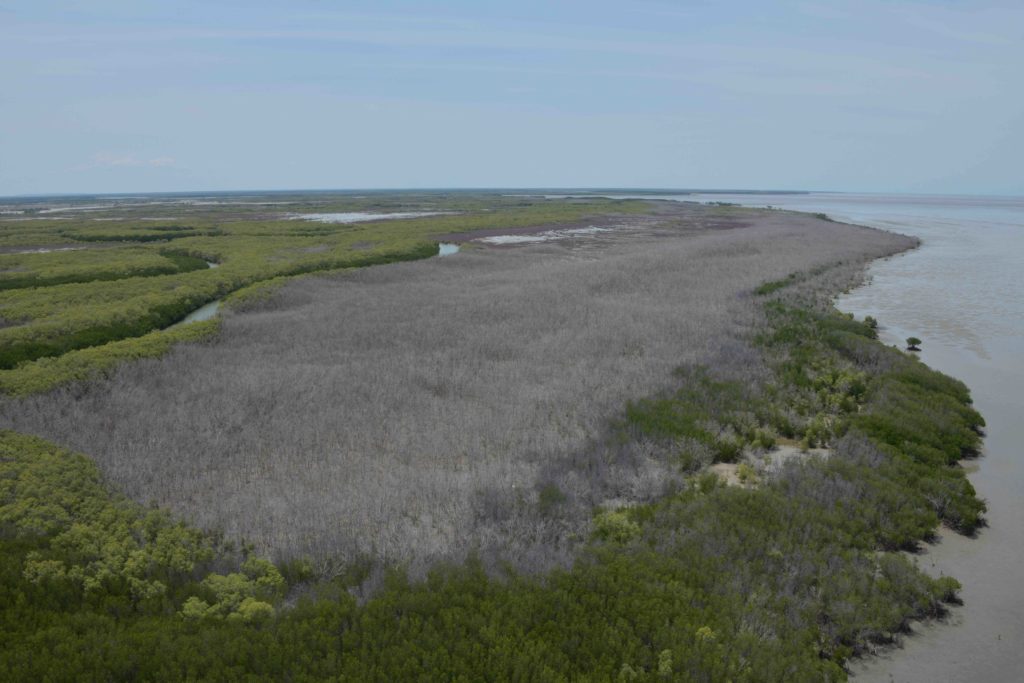21 June 2018
Mangroves support biodiversity and fisheries, protect shorelines from coastal erosion and storm damage, and store more carbon than terrestrial forests. As part of a cross-Hub project on assessing mangrove dieback in the Gulf of Carpentaria, the NESP is contributing to Australia’s first nationwide mangrove observing system through an exciting new dataset of LiDAR and ultra-high definition aerial imagery of the entire Gulf coastline. This now open access dataset is the largest single dedicated acquisition over a mangrove ecosystem anywhere in the world, and provides a vital base for observing change and understanding how this dynamic ecosystem is responding. It will also inform environmental policy and coastal management in Australia and internationally as part of TERN’s mangrove observing system which is collating decades of historical and new data, acquiring new data and generating derived products via the Mangrove Data Portal and Monitoring System. The NESP project is supported through the Northern Australia Environmental Resources Hub, the Tropical Water Quality Hub, the Marine Biodiversity Hub, and the Earth Systems and Climate Change Hub, and a range of partners are contributing to TERN’s larger mangrove observing system.

Large-scale mangrove dieback in the Gulf
Want to know more about the Resilient Landscapes Hub's activities and our research into practical solutions to environmental problems? Stay informed about activities, research, publications, events and more through the Hub newsletter.
"*" indicates required fields